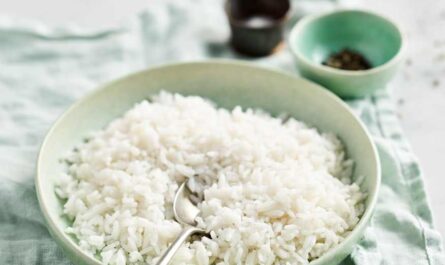The importance of rice texture in sushi cannot be overstated, especially for sushi enthusiasts. The texture of rice plays a crucial role in making the perfect sushi. Whether you are a sushi lover or someone new to this delicious dish, understanding the significance of the rice texture will enhance your appreciation and enjoyment of sushi. This article delves into why the texture of rice is paramount in sushi preparation.

What Makes Sushi Rice Different?
Sushi rice is a specific type of short-grain rice that is used to make sushi. Its unique texture and flavor set it apart from other varieties of rice. The balance between sticky and firm characteristics makes it ideal for binding sushi together.
Stickiness of Sushi Rice
The sticky nature of sushi rice ensures that it holds its shape when forming a sushi roll. Without the right texture, the sushi would not stay intact, leading to a less enjoyable eating experience.
Firmness and Bite of Rice
While stickiness helps form the sushi, the rice must also retain a bit of firmness. The right balance gives the sushi a perfect bite, contributing significantly to the dish’s overall texture.
The Role of Vinegar in Sushi Rice
The addition of vinegar to sushi rice not only enhances flavor but also affects texture. The vinegar helps to break down the rice starch, contributing to the perfect balance of stickiness and firmness.
Flavor Enhancement
Vinegar-flavored rice provides a subtle tartness that complements the sweetness of the fish or other ingredients, enhancing the overall sushi experience.
Textural Impact
Beyond taste, vinegar plays a role in delivering that pleasant mouthfeel which is an integral part of sushi.
The Culinary Art of Sushi Making
Understanding rice texture contributes to the art of sushi making. Master sushi chefs spend years perfecting the balance, flavor, and texture of rice to achieve what is deemed perfect sushi.
The Mastery of Rice Preparation
Sushi chefs meticulously prepare rice by carefully washing, cooking, and seasoning it to achieve the desired texture and flavor. The right rice texture is essential in crafting sushi that stays together and tastes fantastic.
Use of Hangiri in Rice Cooling
A hangiri is a traditional wooden tub used in the final steps of sushi rice preparation, ensuring the rice cools evenly and maintains its delicate texture.
The Impact of Rice Texture on Sushi Varieties
The texture of rice significantly impacts different types of sushi, from nigiri to maki and beyond.
Nigiri Sushi
This style of sushi relies heavily on having the right rice texture. The rice needs to be sticky enough to form a solid foundation for the fish topping, yet not too sticky to overpower the other ingredients.
Maki Rolls
In maki rolls, the right rice texture ensures that the roll holds its shape and that flavors meld together smoothly.
Common Mistakes in Sushi Rice Preparation
A focus on rice texture helps avoid common mistakes in sushi rice preparation. Errors in texture can affect sushi’s taste, appearance, and overall enjoyment.
Overcooking Rice
Overcooking leads to mushy rice, which lacks the needed firmness for sushi.
Inadequate Washing
Failing to wash the rice thoroughly can result in too much starch, affecting the final dish’s texture.
The Solution: Mastering Sushi Rice Cooking
Mastering the art of sushi rice cooking is key to achieving the perfect texture, ensuring that your sushi is both delicious and beautiful.
The Science of Rice Cooking
Understanding the science behind rice cooking, like temperature and timing, helps create that ideal texture.
Using Proper Cooling Techniques
Applying proper cooling techniques ensures the rice dries evenly and achieves the desired texture.
Why Texture Matters to Sushi Lovers
The texture has an innate appeal to sushi lovers, acting as a key contributor to the dining experience.
The Experience of Eating Sushi
The tantalizing texture of sushi rice, combined with the flavors and presentation, creates a comprehensive culinary experience.
Cultural and Culinary Preferences
The right texture resonates with certain cultural elements of sushi appreciation and consumption.
Conclusion
The importance of rice texture in sushi is undeniable. It is not just a component of the sushi-making process but is intrinsic to what makes sushi such a beloved dish worldwide. Understanding and mastering this aspect will heighten your sushi experience whether youre enjoying it as a meal or a culinary adventure.

FAQs
Why is sushi rice sticky?
Sushi rice is sticky because it is a short-grain rice type that naturally has a higher starch content. This characteristic helps the rice hold together, essential for sushi rolls.
What is sushi etiquette?
Sushi etiquette involves traditions and practices observed while eating sushi, including the proper way to dip in soy sauce without overpowering the rice.
Can regular rice be used for sushi?
Regular rice lacks the necessary stickiness for sushi. Using authentic sushi rice ensures the proper texture and flavor.
This article contains affiliate links. We may earn a commission at no extra cost to you.


